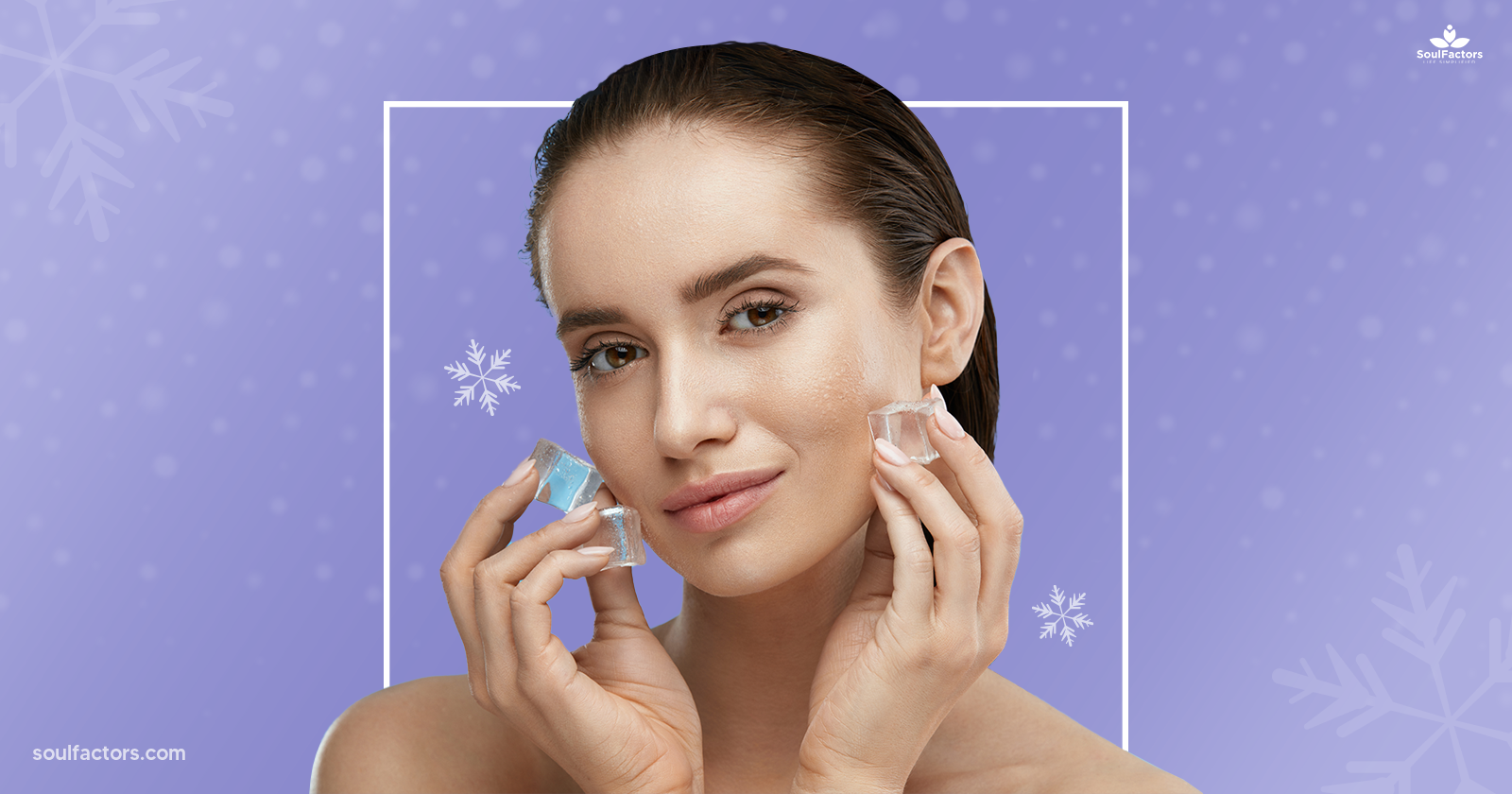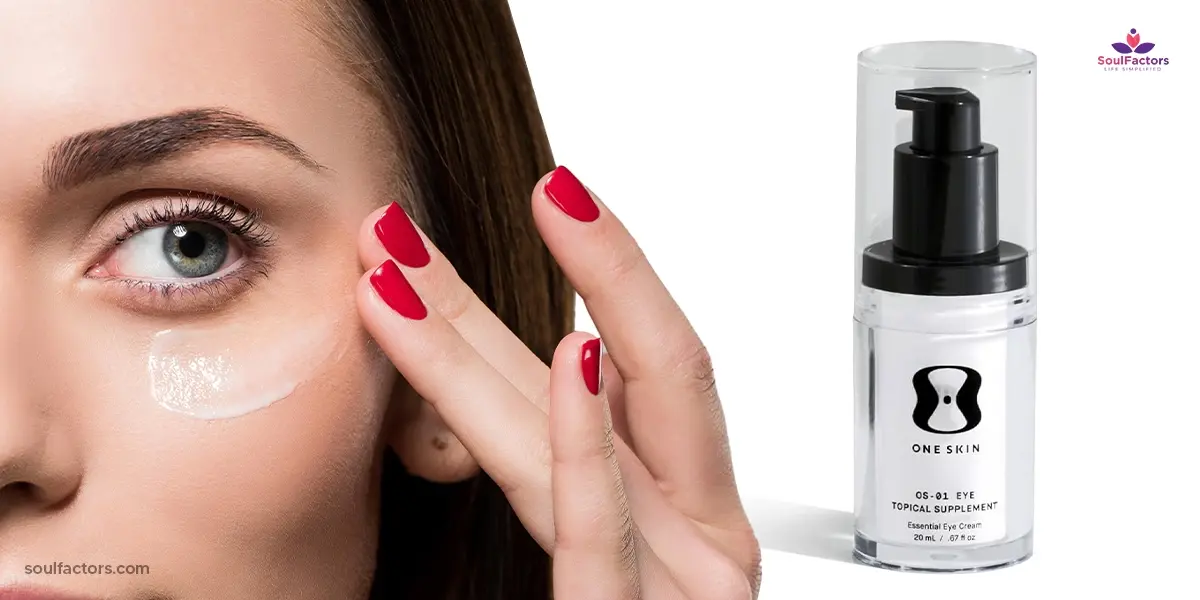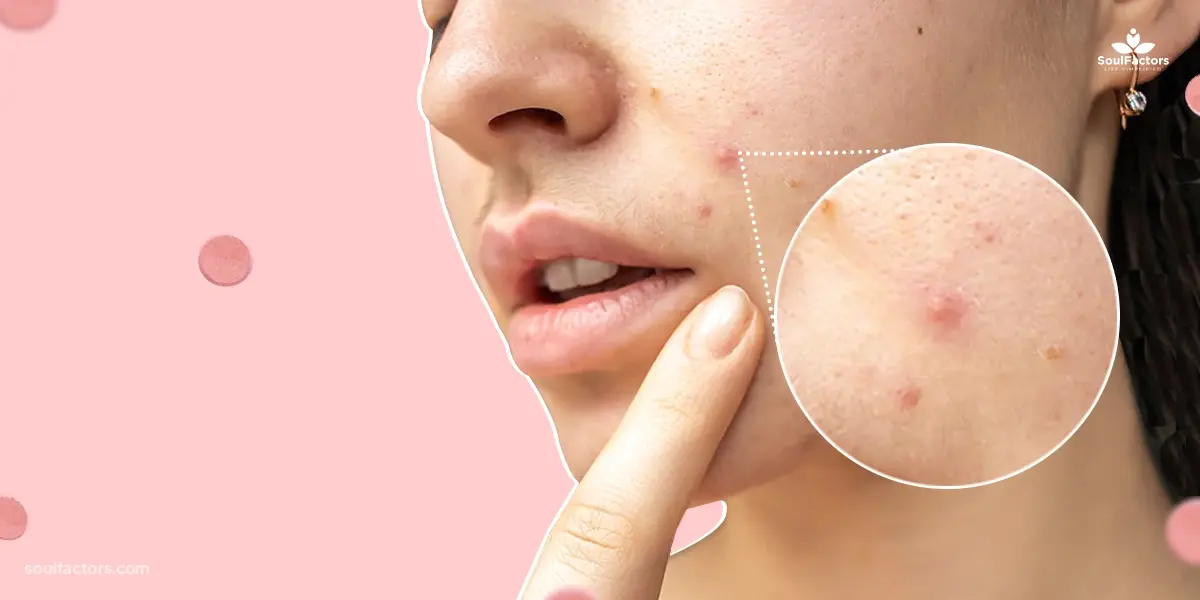Why And How To Use Mandelic Acid In Your Skincare Routine?
How often have you come across mandelic acid in skincare formulas? Mandellic acid remains an underrated ingredient in skincare to date.
On Apr 11, 2023 – 12 minutes read

If adding an acid like mandelic acid to your skincare routine sounds appalling to you, you have a lot to learn about using acids on your skin. But if acids —like hyaluronic acid, salicylic acid, etc.— on the skin do sit well with you, what are the odds of you being familiar with this particular acid?
If you have never heard of this acid or the need for using it in your skincare routine, it’s not odd. You are not alone. It is not a well-known ingredient even in the beauty industry. But that’s not to say it is better ignored! Let’s see why it is better acknowledged and added.
Mandelic Acid: The Lesser Known Acid to Rejuvenate Your Skin
Just when you thought you have it all figured out, here comes another acid to the list of skincare acids you spend more time not knowing than knowing. Sticking to the ones you know rather than trying the ones you have never heard of sounds safe.
But when it comes to a radiant and glowing complexion, you gotta try the right acids instead of smearing too many or just any acid. And, using products with mandelic acid is the right way to go at it.
Mandelic acid was not exactly a popular ingredient. But now that many skincare brands are adding mandelic acid into their lines, it’s getting the limelight it sure does deserve.

It is a type of alpha hydroxy acid (AHA). But what sets it apart from other AHA types is its slower and milder effect on the skin.
Meaning, the risk of redness and irritation is close to none. This does not, in any manner, underestimate the efficacy of the acid in its promise of radiant and smoothened skin.
Mandelic acid is a gentle yet significantly beneficial skincare ingredient that helps with a bevy of skin concerns. However, the straightforward answer to the question ‘what does mandelic acid do to skin’ is rejuvenated skin —clearer, brighter, and smoother skin. This basically addresses all the issues that your skin suffers from.
Now, let’s talk science about mandelic acid, what it does, and when to use it in your skincare routine to benefit your skin.
What Is Mandelic Acid?
Mandelic acid is the multi-tasking ingredient many skincare brands were ignorant about until recently. It is a type of AHA, naturally derived from bitter almonds, that is powerful enough to help your skin in crucial need of overall rejuvenation.
Much like any other AHAs (such as glycolic and lactic acid), mandelic acid also works by exfoliating the skin. Some studies show that it is not as effective as glycolic acid due to its slower penetration and larger molecular size.
As it turns out, these reasons make mandelic acid ideal for dry, sensitive, acne, or eczema-prone skin. Additionally, mandelic acid has antibacterial properties, making it a great choice for skin that is prone to acne flare-ups and congestion.

Let’s talk more precisely.
Unlike its sister acids, mandelic acid is slower to act and thus, does not work aggressively on the skin. The difference begins at the molecular levels. This difference also makes this specific acid so unique. The molecules of mandelic acid are larger than other AHAs used in skincare.
This helps the acid to penetrate the skin at a much slower and gentler pace, eliminating the risk of skin irritation. For instance, it penetrates the layers of the skin slower than glycolic acid as its molecules are almost twice the size of glycolic acid. This also does not mean you will “feel” the acid on your skin either.
What Does Mandelic Acid Do To Your Skin?
How does mandelic acid work? What does it do to the skin? Does it work through this slow absorption? Mandelic acid works by penetrating the impacted, congested surface skin cells and loosening the bond that holds your dead skin cells on the top layer —exfoliation in simpler terms. This, in turn, allows your skin to shed the dead cells more effectively.

By removing the top layer of damaged skin, mandelic acid helps in promoting the growth of a newer, fresher, brighter, and healthier layer of skin while addressing certain skin issues you spend your time worrying over.
To emphasize, it clears your skin and creates an even tone for clearer skin and a brighter complexion. Usually, mandelic acid is found in combination with other products to provide all kinds of skin benefits. It also works well when combined with hydators such as hyaluronic acid.
Why Should You Use Mandelic Acid In Your Skincare Routine?
Mandelic acid is a marvelous ingredient. You should use it in your skincare routine because of the number of benefits it carries. And its benefits don’t begin and end with its glow-inducing prowess. Its effectiveness goes way beyond that.
From improving skin texture via exfoliation to increasing cell turnover to hydrating skin, the benefits of using mandelic acid on your skin are many. You can bag all of these benefits by simply adding the AHA to your skincare regimen.
Gently exfoliates the skin
Almost all skin issues start with dead skin cells. As mandelic acid is a chemical exfoliant, it removes layers of debris and dead skin cells through a reaction with the skin. Unlike physical exfoliants that usually include abrasive scrubbing, this one works calmly.

It is also the gentlest of all AHAs, meaning any skin type can use it, including highly sensitive skin and those with rosacea. In addition, the risk of skin irritation will be less due to its mild and slow effect on the skin.
Increases cell turnover
Mandelic acid works effectively to accelerate skin cell turnover by dissolving your cells. This is why you can find it in several chemical peels. Also, this particular benefit helps with acne scarring and skin discoloration as well.

Improves skin texture
When you exfoliate your skin, it promotes collagen (the principal protein found in skin and connective tissue) production. As a result, your skin improves its texture and appearance, leaving your skin smoother and firmer.

Of course, results can vary from person to person but several women had a noticeable improvement in their appearance and complexion after using mandelic acid for a couple of weeks.
Brightens skin
This goes without saying: exfoliated skin paves the way to a brighter complexion. By removing the top layer coated with build-ups of dead skin cells, mandelic acid refines your complexion.

Your skin will appear luminous and radiant because you have literally cleaned it. Also, exfoliated skin reflects the light in a much better way.
Treats acne
Overproduction of sebum, build-ups of dead skin cells, bacteria, and inflammation are what trigger acne breakouts. As you know mandelic acid is naturally antibacterial, it can help in preventing acne breakouts. Because by using mandelic acid products, you can exfoliate your skin, regulate sebum production, and reduce inflammation effectively.

It has helped even those with cystic acne. Although mandelic acid works slowly, it penetrates deep into your pores to unclog and clear them, reducing comedones. This is also one of the reasons why you can use mandelic acid for acne treatment.
Reduces hyperpigmentation
Hyperpigmentation and melasma are common skin conditions that many women suffer from. According to several research studies(1), mandelic acid reduced hyperpigmentation in melasma by 50% in about just 4 weeks.
All thanks to its skin tone correcting properties. As it is gentle, mandelic acid won’t trigger inflammation and hyperpigmentation like other AHAs.

Also, it does not cause irritation for those with deeply pigmented skin either. Furthermore, due to its exfoliating properties and increased cell turnover, mandelic acid can lighten dark spots, blemishes, acne scarrings, and sun damage on your skin.
Softens aging signs
A decline in collagen is inevitable with aging, resulting in fine lines and wrinkles. But with the help of collagen production by using mandelic acid, you can soften those obvious signs of aging. Getting rid of expression lines may not be possible, but long-term use of the acid can definitely help with the elasticity and firmness of the skin.
Further, a few studies have shown that the gentleness of the bunch from AHA can help dry skin produce sebum on its own.

A weekly exfoliation of the skin with mandelic acid helps you rejuvenate your skin without worrying about acne breakouts, eczema flare-ups, dehydration, or skin irritation. So, use mandelic acid regularly to improve your skin concerns.
Always keep in mind that the results you get through these benefits you get using mandelic acid are cumulative. Thus, the longer you use the AHA, the better results you will achieve.
Mandelic Acid Treatments: How To Use?
There are two ways to add mandelic acid to your skincare routine —either by treating your skin with a high-strength chemical peel or by using mandelic acid products as topical formulation.
The first method must be done in a clinical setting for treating melasma, serious cases of hyperpigmentation, and active cases of acne. Typically, mandelic acid is combined with salicylic acid for treating acne.
Clinical Treatment
Superficial mandelic peels can be done by an esthetician at the salon or medical spa while deeper peels are by a dermatologist. With superficial peels, you may not experience any side effects at all. But deeper peels will cause your skin to flake to reveal brighter skin underneath.

You also have the option to add a micro-needling(2) procedure to stimulate collagen along with the chemical peel. All these methods are expensive yet effective. But you have to be patient to see the results you want to see.
Topical Formulation
The other way is easier as it is an at-home skincare procedure. There are chemical peels available to do at home, facial serums, and other products like toners and face washes.
When it comes to facial serums, you do not have to worry about using mandelic acid at home either, because every brand that formulates it guarantees no skin-burning.
If you feel your skin tingling, it’s because of the dryness of your skin and the effective working of the acid to peel off the top layer of dead skin cells. Also, it is important to note that you do not need a concentration of more than 10%. As it is light-sensitive, it comes packaged in an opaque container.

So if you are choosing a mandelic acid product—be it chemical peels, serums, or even mandelic acid face wash or toner, choose safely.
When it comes to chemical peels, though you can buy professional-grade chemical peels at home, it’s always a safe option to go to your derm to guide you. If you use at-home chemical peels, use them no more than a couple of times a week.
They give immediate results, compared to serums but they are much stronger and can cause irritation quickly when overused. Most importantly, be sure to follow the brand guidelines while using any said product.
When To Use?
Add mandelic acid to your evening skincare routine. After cleansing (and toning) your skin, apply mandelic acid (facial serum) in small amounts using light tapping with your fingers to press it into your skin.
Allow it to absorb and sit well. Then, proceed to apply moisturizer. Most facial serums are applied only at night and can be used every night.
How Often Should You Use Mandelic Acid?
Yes, mandelic acid is ideal for sensitive skin. But that does give you a green flag for using it every day. You have to be slow and steady, particularly when you have just incorporated it into your skincare routine. However, some mandelic acid products with low concentrations are formulated for everyday use, like facial serums.

Whichever product you opt to use, you must talk to your dermatologist before starting using it to avoid any problems in the future. S/he can guide you in choosing the right mandelic acid products according to your individual needs.
Are There Any Side Effects Of Using Mandelic Acid?
Many people use mandelic acid products and peels without experiencing any side effects. But, though the chances are extremely low, skin irritation is often considered as one of the side effects of mandelic acid.

However, if it gets worse, or you experience redness, swelling, or itching, you have to stop using it. These possible side effects are likely to happen when you start with a higher concentration. With deeper peels, flaky skin is inevitable.
Who Can Use Mandelic Acid?
Mandelic acid is suitable for all skin types. But those with super sensitive skin who need a gentler exfoliant, especially in contrast to the traditional harsh AHAs, can make use of this AHA so effectively.

It’s also a great option for those with highly pigmented skin who are prone to hyperpigmentation and melasma(3). Some skin with dark tones gets skin irritation by overuse of AHAs. But in the case of mandelic acid, you are safe.
Mandelic Acid VS Salicylic Acid and Niacinamide
Though mandelic acid is not recommended to combine with other acids, salicylic acid is a safe option. In fact, a few studies show that mandelic acid when combined with salicylic acid works effectively when used in strong peels for darker skin tones.

It treats dark spots, uneven tone, discoloration, and acne scarrings. Likewise, you can use both mandelic acid and niacinamide together in the same routine. The order must be: apply mandelic acid before applying niacinamide.
Before Using
When you are starting a face treatment, always start off with a low concentration rather than jumping in with a high concentration. So, even with mandelic acid, start with a lower percentage and work your way up over time.
You have to allow your skin to get used to the AHA and build up a tolerance. Secondly, don’t choose high concentration mandelic peels for at-home use. You can reduce the risk of side effects this way.

When you are using AHAs on your skin, you have to wear sunscreen with high SPF during the day and it’s non-negotiable! Because they, including mandelic acid, tend to make your skin sensitive to harsh UVA rays.
Also, you have to keep hold of your glow, right? So, do not step out without smothering sunscreen during the daytime. Finally, you cannot use mandelic acid with other direct acids, other peels, retinoids, and retinol. These may cause irritation. It works well when combined with:
- Vitamin C derivatives
- Antioxidants (except EUK 134)
- Encapsulated retinaldehyde
- More Molecules —Alpha Arbutin, Niacinamide, Caffeine Solution
- Magnesium Ascorbyl Phosphate
- Ascorbyl Glucoside
- Ascorbyl Tetraisopalmitate Solution
- All the hydration & oils
To conclude, mandelic acid can transform your skin enormously. This potent ingredient can treat several of your skin concerns, right from textural irregularities to dull and pigmented skin. Not to mention the gentleness of mandelic acid that helps it stand out, unlike many other acids for skin that are considered too strong to the skin. So, if you choose mandelic acid in your skincare routine, be consistent and patient enough for it to work and deliver slow and steady results. You do your part and let it do its part!

Subscribe to Newsletter
Elevate your routine, stay on trend, and embrace a personalized beauty journey with our curated insights.





Write a Comment